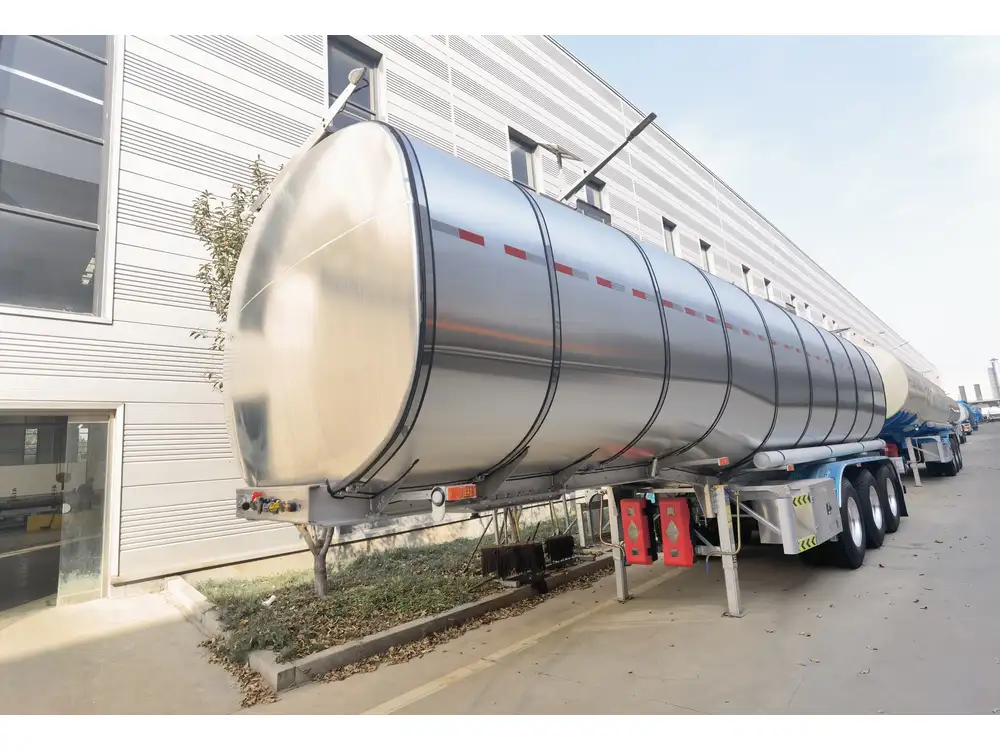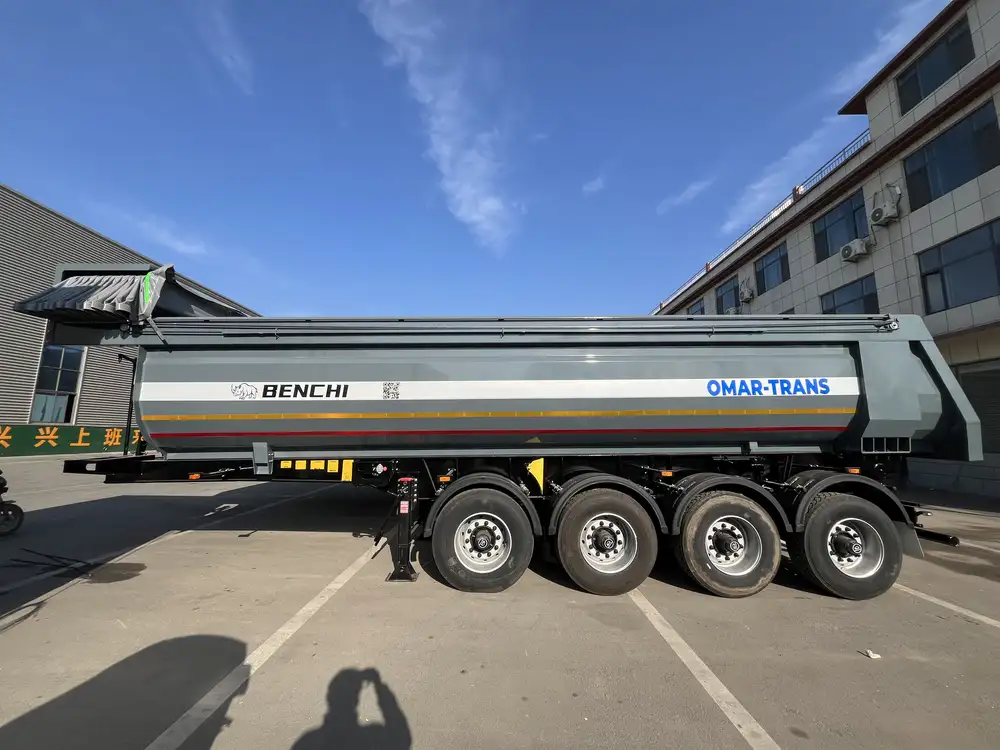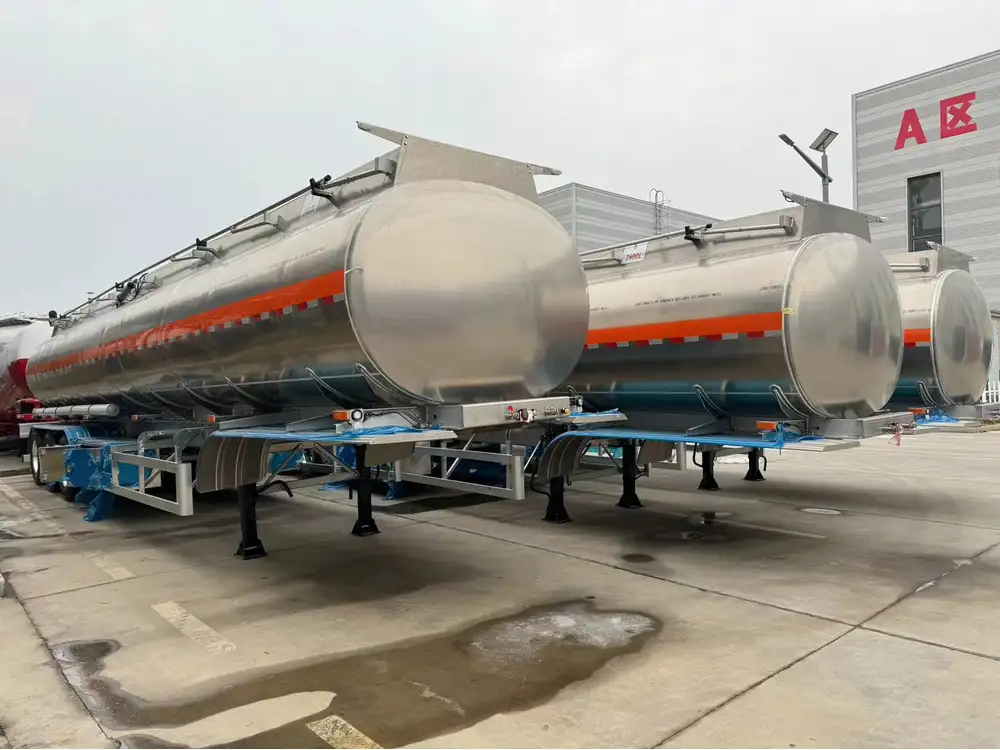The logistics and transportation industry thrives on precise measurements and calculations. Among the various factors that determine efficiency and safety on the road, weight stands paramount. When we delve into the specifics of a fully loaded semi single trailer, understanding its weight can shed light on transportation capabilities, regulatory compliance, and operational cost management.
What Is a Semi Single Trailer?
A semi single trailer, often referred to as a single-axle semi-trailer, features a design optimized for hauling goods with maximum efficiency while minimizing strain on the towing vehicle. Generally, these trailers are configured with one axle at the rear and are particularly adept at carrying lighter loads over shorter distances. The structure allows for maneuverability, making the transport process not only easier but also cost-effective.
Key Components of a Semi Single Trailer
| Component | Description |
|---|---|
| Chassis | The framework that supports the trailer’s load, typically made of steel or aluminum. |
| Axles | Support the weight of the trailer while allowing for easy mobility; usually designed with one axle in a semi single configuration. |
| Suspension System | Ensures stability and comfort during transit, absorbing shock and maintaining balance. |
| Load Floor | The area where cargo is placed; can vary in height and material depending on design. |
| Braking System | Critical for safety, semi single trailers might feature air or hydraulic brakes. |

Weight Specifications of a Fully Loaded Semi Single Trailer
Determining Factors of Weight
A fully loaded semi single trailer’s weight is influenced by several factors, including:
- Trailer Design: The material used in construction, whether steel or aluminum, affects the overall weight.
- Cargo Type and Arrangement: Different cargo types (e.g., perishables, machinery, bulk materials) have varying weights and distributions.
- Additional Equipment: The presence of added features, like refrigeration units or specialized lifting mechanisms, can increase total weight.
Average Weight Ranges
| Weight Classification | Typical Weight (lbs) |
|---|---|
| Empty Trailer Weight | 6,000 – 12,000 |
| Maximum Loaded Trailer Weight | 35,000 – 45,000 |
| Average Fully Loaded Weight | 30,000 – 40,000 |
The maximum allowable weight—a critical figure—varies by jurisdiction. In the United States, the Federal Motor Carrier Safety Administration (FMCSA) regulates these weights under Title 49 of the Code of Federal Regulations (CFR), allowing a maximum of 80,000 lbs gross vehicle weight (GVW) for trucks on interstate highways.

Legal Considerations and Compliance
Bridge Law
A critical aspect of trailer weight is compliance with state Bridge Laws. These regulations dictate the maximum weight for axles based on the distance between them. For instance, a fully loaded semi single trailer must comply with these formulas to avoid overloading, which can lead to fines, increased wear on tires, and potential safety hazards.
Importance of Weight Stations
Regular stops at weight stations allow authorities to check compliance with weight regulations. It’s essential for operators to understand how their fully loaded semi trailer interacts with legal weight spheres to avoid penalties and ensure safe operation.

Impact of Weight on Fuel Efficiency
Understanding Fuel Consumption
The weight of a fully loaded semi single trailer directly impacts fuel efficiency. Heavier loads require more power from the tractor unit, subsequently increasing fuel consumption. For example, every additional 1,000 lbs of cargo can decrease fuel efficiency by approximately 0.1 miles per gallon (mpg).
Strategies for Fuel Efficiency Improvement
- Optimal Loading: Distribute cargo evenly throughout the trailer to maintain balance and improve aerodynamics.
- Aerodynamic Shrouds: Installing devices designed to reduce wind resistance can mitigate the impact of increased weight on fuel consumption.
- Regular Maintenance: Keeping tractor and trailer tires properly inflated and ensuring the vehicle is in optimal working condition can enhance fuel efficiency.
| Weight Impact on Fuel Efficiency | Efficiency Loss (mpg) |
|---|---|
| Under 3,000 lbs | -0.0 mpg |
| 3,000 – 4,000 lbs | -0.1 mpg |
| Over 5,000 lbs | -0.2 to -0.3 mpg |

Financial Considerations: Cost of Loading
Cost Implications of Weight
Understanding the economics of hauling a fully loaded semi single trailer is pivotal. The costs associated with weight go beyond fuel prices:
- Tire Wear and Replacement: Increased weight leads to greater tire wear, resulting in more frequent replacements, impacting overall maintenance costs.
- Insurance Costs: A heavier load might increase insurance premiums as the risk associated with higher weight loads increases.
- Regulatory Fees: Non-compliance with legal weight limits can lead to fines that increase operational costs dramatically.
Cost-Benefit Analysis
To maximize profitability, manufacturers and logistics companies can utilize weight management strategies which can significantly impact the bottom line. Identifying the sweet spot for payload—balancing weight with fuel efficiency—can lead to considerable savings over time.
| Cost Factor | Impact of Weight Increase |
|---|---|
| Fuel Costs | Direct proportional increase based on weight |
| Maintenance Cost | Increased wear leading to more frequent service |
| Insurance | Potential increases due to risk assessment |
| Compliance Fines | Risks associated with overloading |

Safety Concerns Linked to Trailer Weight
Enhanced Risks of Overloading
Overloading a semi single trailer compromises stability, leading to increased risks such as:
- Tip-Overs: Excessive weight can shift the center of gravity, especially during turns.
- Braking Inefficiencies: Heavier loads require more distance to stop, elevating the dangers during emergency situations.
- Tire Blowouts: Increased pressure and friction from additional weight can result in tire failures.
Best Practices for Safety
- Routine Inspections: Always conduct comprehensive pre-trip inspections focused on weight compliance.
- Load Monitoring: Utilize onboard scales or weight distribution monitoring systems to ensure compliance throughout the transport route.
- Driver Training: Investing in proper driver education programs about handling loads can significantly reduce the risk associated with trailer weights.

Conclusion: The Intricacies of a Fully Loaded Semi Single Trailer
Understanding the comprehensive weight of a fully loaded semi single trailer is crucial for industry stakeholders. This not only enhances safety but also leads to more efficient operations that save costs and deliver better service.
By being cognizant of weight regulations, improving fuel efficiency, considering financial implications, and prioritizing safety, manufacturers and logistics companies can operate with greater efficacy in an ever-demanding market.
In a landscape where every pound counts, the knowledge of weighing a semi single trailer is not just about legality—it’s about fostering a culture of safety, efficiency, and responsibility that resonates through the entirety of the supply chain.
Stay informed, stay compliant, and transport smartly.



